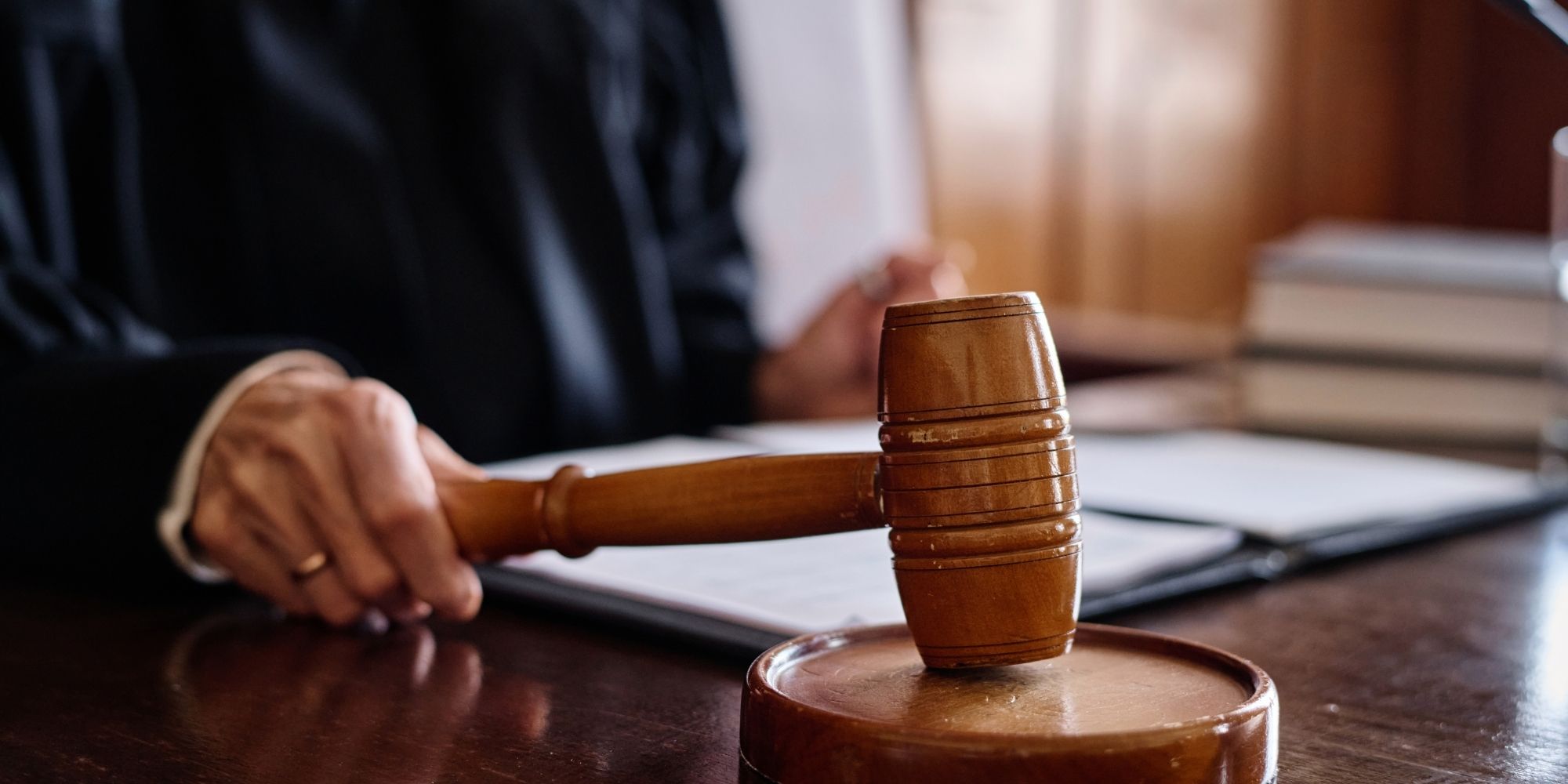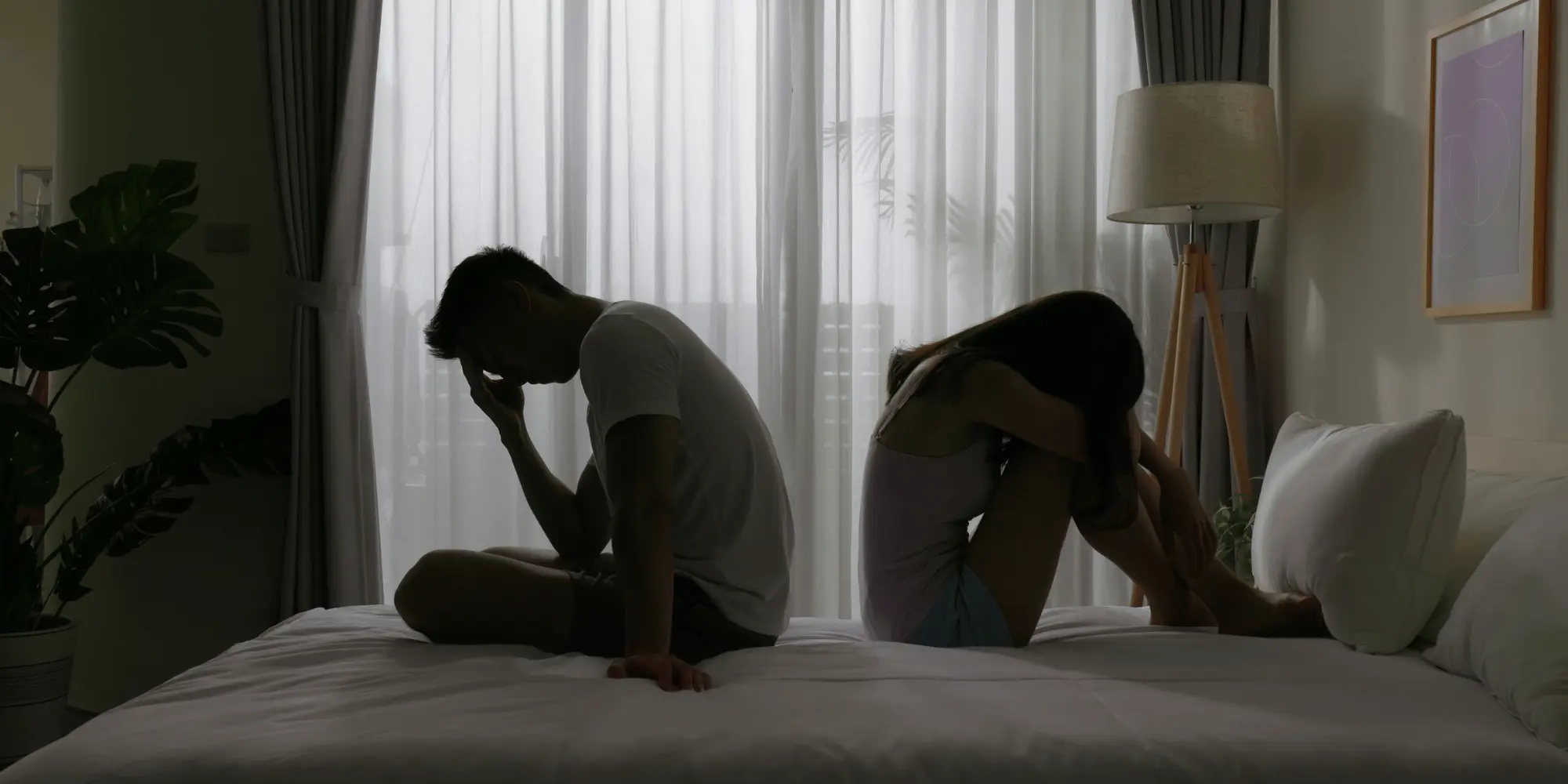What to Know About Brooklyn Post Conviction Relief
If you were convicted of a crime in Brooklyn, your case may not be over. Post-conviction relief gives you the legal tools to challenge an unjust conviction, seek a new trial, or reduce an excessive sentence. Whether you were denied a fair trial, have uncovered new evidence, or suffered from ineffective legal representation, you still have options, and Petrus Law can help you pursue them.
At Petrus Law, we fight for clients who need a second chance. Our Brooklyn post conviction attorneys handle everything from CPL 440 motions to federal habeas corpus petitions. We conduct meticulous reviews of trial records, uncover legal errors, and bring powerful new evidence before the court. If you or someone you love is considering post-conviction relief in Brooklyn, call Petrus Law today at (646) 733-4711 or visit our contact page for a confidential consultation.
Understanding Post-Conviction Relief in Brooklyn
Post-conviction relief allows people in Brooklyn to challenge their criminal convictions when the justice system gets it wrong. Whether the issue involves new DNA evidence, ineffective assistance of counsel, or prosecutorial misconduct, the law gives convicted individuals one last chance to correct a wrongful outcome. A Brooklyn post-conviction motion can lead to a reduced sentence, a new trial, or even a complete reversal of a conviction.
At Petrus Law, we help clients navigate these high-stakes legal actions using a strategy rooted in New York law and constitutional protections. These cases are complex, fact-intensive, and procedurally strict, but they’re also one of the most powerful legal tools available to those seeking a second chance.
The Structure of Post-Conviction Relief Under New York Law
Post-conviction relief is governed by Articles 440 and 450 of the New York Criminal Procedure Law. These statutes allow defendants to file motions in the same court that issued their conviction, seeking to vacate the judgment or correct an illegal sentence. The New York Unified Court System provides an overview of these remedies and distinguishes them from direct appeals.
The most commonly used statute is CPL 440.10, which allows the court to vacate a conviction when there has been a constitutional violation, prosecutorial misconduct, newly discovered evidence, or other legal defects that affected the outcome of the case. CPL 440.20, by contrast, allows the court to set aside a sentence that was illegal or improperly imposed.
These are not discretionary tools for post-verdict regret. They are codified rights for defendants who were denied a fair trial or who can demonstrate that new information has surfaced that would have changed the outcome.
Common Legal Grounds for Relief in Brooklyn Cases
Not every mistake justifies reopening a case. Courts require clear legal and factual justification. Brooklyn post-conviction motions typically fall into one of the categories below.
Ineffective Assistance of Counsel
Defendants are entitled to competent legal representation under the Sixth Amendment. When an attorney’s performance falls below professional standards, such as failing to investigate evidence, call critical witnesses, or explain the consequences of a plea, a conviction may be overturned. The two-part test for this claim comes from Strickland v. Washington, a U.S. Supreme Court case that sets the standard nationwide.
If your defense attorney failed to challenge illegally obtained evidence, ignored key facts, or pressured you into accepting a plea without explaining the risks, post-conviction relief may be warranted.
Prosecutorial Misconduct and Brady Violations
When prosecutors withhold evidence that could have helped the defense, they violate constitutional due process. The U.S. Supreme Court case Brady v. Maryland made clear that the state must turn over exculpatory information to the accused. Failing to do so can result in a wrongful conviction.
The U.S. Department of Justice’s Criminal Resource Manual outlines what prosecutors are required to disclose. When evidence is suppressed, whether it’s surveillance footage, witness statements, or forensic reports, post-conviction relief may be the only avenue left to fix the injustice.
Newly Discovered Evidence
New facts that were unavailable at trial can form the basis of a successful post-conviction motion. This includes recanted testimony, physical evidence that was hidden or overlooked, or scientific developments like updated DNA testing. Under CPL 440.10(1)(g), newly discovered evidence must be credible, material, and likely to change the result if presented at a new trial.
According to the Innocence Project, over 50 percent of overturned convictions involved new forensic or testimonial evidence that wasn’t available during the original trial. In Brooklyn, these cases often begin with a detailed motion supported by affidavits, lab results, and expert declarations.
DNA Testing and Scientific Developments in Post-Conviction Cases
Scientific advances have reshaped the legal landscape for post-conviction relief. New York law allows convicted individuals to request DNA testing under CPL 440.30(1-a), which authorizes courts to grant testing when identity was at issue in the case. The law applies to biological evidence that was not tested before or that can now be analyzed using newer methods.
The National Institute of Justice emphasizes how modern DNA technology has been used to exonerate hundreds of wrongfully convicted individuals. In Brooklyn, access to DNA testing often comes down to timely filing and the availability of preserved biological evidence. If that evidence excludes the defendant as a source, it may be the key to winning a new trial or outright dismissal.
Procedural Challenges in Brooklyn Post Conviction Litigation
Post-conviction relief is not just about having a strong claim; it’s also about meeting procedural rules. Courts in Brooklyn apply strict standards when reviewing these motions, especially when issues could have been raised earlier.
The New York State Bar Association outlines how procedural defaults can bar review of post-conviction claims. For example, if a defendant fails to file a motion within a reasonable time after discovering new evidence, the court may deny the claim as untimely. If the issue was previously raised and denied on appeal, the court may reject it as repetitive or waived.
That’s why Petrus Law conducts a full timeline audit in every Brooklyn post conviction case. We evaluate prior appeals, identify gaps in the trial record, and determine which claims remain viable under CPL and federal law.
Federal Post-Conviction Relief Options for Brooklyn Defendants
While most post-conviction efforts begin in state court, many Brooklyn defendants ultimately seek justice through the federal system. When all New York state-level remedies have been exhausted, individuals may petition a federal court for habeas corpus relief. This powerful legal tool allows federal judges to review whether a person’s conviction or sentence violated the U.S. Constitution. Federal post-conviction relief is complex, time-sensitive, and governed by highly technical rules, but it remains one of the last remaining options for people who have been wrongfully convicted or unfairly sentenced.
At Petrus Law, we represent Brooklyn residents in both state and federal post-conviction proceedings. We understand how to navigate the transition from CPL 440 litigation to federal habeas review and know how to present constitutional claims in a way that meets the strict federal standards.
What Is a Federal Habeas Corpus Petition?
A writ of habeas corpus is a petition filed in federal court asking the government to justify the legality of a person’s incarceration. In the post-conviction context, it is filed under 28 U.S. Code § 2254, which allows state prisoners to challenge their convictions because they are in custody in violation of the Constitution or federal law.
Unlike a direct appeal, a habeas petition is not just about trial errors; it’s about constitutional harm. Defendants often raise claims such as denial of effective counsel, violation of due process, improper jury instructions, or unlawful confessions. The Federal Judicial Center provides a detailed manual on how habeas corpus works, including the procedural requirements and types of constitutional claims that may succeed.
Habeas petitions are filed in the U.S. District Court for the Eastern District of New York, which has jurisdiction over Kings County convictions. The federal judge may hold hearings, review state court transcripts, and issue a ruling that overturns the conviction, orders a new trial, or remands the case for resentencing.
Exhaustion of State Remedies Is Required
Before bringing a habeas corpus petition, a defendant must fully exhaust all available state court remedies. This means raising every constitutional claim through the New York appellate process, including any CPL 440 motions, before seeking federal intervention. If a claim was not properly raised in state court, the federal court may refuse to consider it under the doctrine of procedural default.
The U.S. Supreme Court’s decision in O’Sullivan v. Boerckel clarified that state prisoners must give state courts the first opportunity to review constitutional claims. Skipping this step can doom a federal petition, even if the underlying claim has merit.
At Petrus Law, we ensure that all constitutional issues are preserved for federal review by filing strategic CPL 440 motions and incorporating federal claims into direct appeals. This careful record-building gives our clients a stronger foundation if their case must eventually proceed to the federal courts.
Procedural Default and Cause-and-Prejudice Doctrine
If a claim was not raised in state court, a federal judge may still consider it under the limited exceptions of cause and prejudice or actual innocence. These doctrines are explained in detail by the Office of the Federal Public Defender and are among the most complex aspects of habeas law.
We often work with forensic experts, psychologists, and investigators to develop new evidence that can support a showing of innocence or overcome procedural hurdles. Federal judges are more likely to grant relief when the record is well-developed and the constitutional violation is clear.
The One-Year Time Limit Under AEDPA
Habeas petitions are subject to strict filing deadlines under the Antiterrorism and Effective Death Penalty Act (AEDPA), which Congress enacted in 1996. In most cases, a defendant has only one year from the conclusion of direct review to file a federal petition. That clock may pause while post-conviction motions are pending in state court, but once time runs out, the claim is likely to be barred forever.
The U.S. Courts website outlines how AEDPA applies and why timeliness is one of the most common reasons habeas petitions are dismissed. At Petrus Law, we monitor every deadline and ensure that all filings are submitted in a way that preserves our clients’ rights under federal law.
Equitable Tolling and Exceptions to the One-Year Rule
In rare cases, courts may allow a late habeas petition under the doctrine of equitable tolling. This applies when extraordinary circumstances, such as serious illness, mental incapacity, or attorney misconduct, prevented a timely filing. The American Bar Association provides continuing guidance on how courts interpret and apply equitable tolling in federal habeas proceedings.
Although the standard is high, we have successfully argued for tolling in situations where clients were denied access to legal resources or where prior attorneys failed to advise them about filing deadlines. Every case requires a detailed record and strong factual justification.
Strategic Post-Conviction Defense in Brooklyn Courts
Successfully challenging a conviction after sentencing takes more than filing paperwork. Brooklyn post conviction litigation is a high-stakes legal battle that requires precision, legal insight, and a deep understanding of how Kings County judges interpret procedural law. Whether the issue involves newly discovered evidence, a Brady violation, or ineffective counsel, winning post-conviction relief demands a fully developed record, aggressive legal arguments, and airtight compliance with both state and federal rules.
At Petrus Law, we treat post-conviction litigation like the trial that never happened because, in many cases, our clients never got a fair one to begin with. We don’t recycle generic motions. We investigate, we fact-check, and we tailor every petition to the facts that matter most. That’s how we create meaningful opportunities to overturn wrongful convictions in Brooklyn.
Investigating the Record and Trial History
A successful post-conviction strategy always starts with a full review of the trial court record, prior appeals, and CPL 440 filings. Our attorneys request certified transcripts, gather court filings, and identify every legal issue that was mishandled, missed, or misunderstood by previous counsel. We also identify what was never presented, including witnesses who were not called, alibi evidence that was overlooked, or police misconduct that was never challenged.
The New York State Office of Indigent Legal Services notes that many convictions arise from under-resourced or overburdened defense attorneys. At Petrus Law, we re-investigate the case from the ground up to ensure no viable claim is left unexplored. We also use Freedom of Information Law (FOIL) requests to uncover police reports and evidence that may have been withheld.
Collaborating With Experts in Forensic, Medical, and Legal Fields
To win post-conviction relief in Brooklyn, the court must see more than allegations; it must see evidence. That is why we regularly consult with forensic pathologists, psychologists, DNA analysts, and digital experts to reexamine crime scene evidence, injury claims, or electronic data. In cases involving false confessions or unreliable eyewitnesses, expert input can mean the difference between denial and a new trial.
The National Institute of Standards and Technology explains how modern forensic techniques have transformed criminal casework. At Petrus Law, we apply these scientific tools to Brooklyn post conviction cases involving arson allegations, firearm evidence, cell phone records, and contested medical diagnoses. We use expert affidavits and peer-reviewed literature to strengthen our petitions and dismantle flawed prosecution narratives.
Preparing Comprehensive CPL 440 Motion Packages
Filing a CPL 440.10 motion in Brooklyn isn’t about filling in blanks. Each motion must include detailed legal analysis, supporting affidavits, exhibits, and case law citations. We draft our motions to comply with the procedural requirements set by the New York Criminal Procedure Law, while also anticipating the District Attorney’s counterarguments.
In many cases, we submit sworn affidavits from witnesses, trial experts, and even prior counsel to build a compelling record. We cite applicable rulings from the New York Court of Appeals and the Second Department Appellate Division to show how Brooklyn courts have handled similar claims. This depth of legal support helps us secure hearings and avoid procedural denials.
Filing Supplemental Motions to Address New Evidence
Post-conviction litigation in Brooklyn is often an evolving process. As new evidence emerges, whether through FOIL responses, private investigation, or forensic reanalysis, we file supplemental memoranda and amended motions to update the record. Judges are more likely to schedule a hearing when the defense brings forward credible, newly discovered material supported by timely filings.
Attacking the Reliability of Original Evidence
Much of the evidence used to secure a conviction may appear credible on the surface but fall apart under scrutiny. At Petrus Law, we challenge eyewitness identifications using data from the Innocence Project and psychological experts who can explain memory distortion. We confront jailhouse informants using impeachment records and credibility reports. And we scrutinize police search and seizure tactics using Fourth Amendment precedents established in Mapp v. Ohio.
When the state relied on questionable forensic evidence, such as toolmark comparison, arson patterns, or bite mark analysis, we cite reports from the National Academy of Sciences that show how unreliable some of these methods are in post-conviction contexts.
Why Brooklyn Clients Trust Petrus Law With Post-Conviction Defense
Post-conviction litigation is not just about filing motions. It’s about fighting for justice when the system has already failed once. That level of advocacy requires more than legal knowledge; it demands strategy, persistence, and experience with the unique procedures of Brooklyn’s criminal courts. At Petrus Law, we don’t approach these cases as a formality. We treat every Brooklyn post conviction matter as a last chance to get it right.
Clients turn to us because we know how to litigate aggressively and intelligently in both state and federal courts. We have helped individuals overturn felony convictions, reduce decades-long sentences, and reclaim their rights when the law was misapplied or ignored.
Deep Knowledge of Brooklyn Courts and Local Post-Conviction Procedure
Our attorneys practice in the Kings County Supreme Court and Criminal Court on a regular basis. We know how local judges evaluate CPL 440.10 and 440.20 motions, and we tailor every petition to reflect the court’s expectations for clarity, legal support, and evidentiary value.
The New York City Criminal Court system outlines how motions to vacate are filed, how hearings are scheduled, and how post-conviction cases differ from traditional appeals. We align our filings with these procedures while incorporating cutting-edge forensic science, psychological analysis, and investigative reports. Every element of the motion is designed to support a credible, fact-specific claim for relief that can survive aggressive opposition from the Brooklyn District Attorney’s Office.
Experience Litigating Under Both State and Federal Law
Our firm has successfully filed post-conviction claims under both New York’s Criminal Procedure Law and 28 U.S. Code § 2254 for federal habeas corpus review. We understand how to preserve federal constitutional claims during CPL 440 litigation so they are not procedurally barred later in federal court.
Clients who work with Petrus Law know they have a defense team that will follow the case across jurisdictions from Kings County criminal courtrooms to the U.S. District Court for the Eastern District of New York. Our ability to move seamlessly between systems is critical when post-conviction relief becomes a multi-stage process involving multiple courts, transcripts, and legal standards.
Collaborative, Evidence-Driven Legal Strategy
Petrus Law doesn’t just draft motions; we build cases. That means collaborating with forensic pathologists, trauma experts, computer analysts, and social science researchers to reconstruct what happened. When a client is wrongfully convicted, the facts matter more than ever. Our team brings those facts to life through affidavits, expert reports, and supporting documentation.
For example, in cases involving immigration risk, we work closely with attorneys familiar with U.S. Citizenship and Immigration Services and its treatment of criminal convictions under the Immigration and Nationality Act. If a client faces deportation due to a conviction, we incorporate those consequences into our post-conviction filings and argue for vacatur based on the collateral damage to due process.
Commitment to Clients Beyond the Courtroom
Many Brooklyn post conviction clients are dealing with more than just legal setbacks. They are navigating prison conditions, family separation, housing instability, and lost employment. At Petrus Law, we see the whole picture. That’s why we also assist eligible clients with record sealing petitions under CPL 160.59, referrals to reentry services, and advocacy for alternatives to incarceration when resentencing is possible.
We regularly coordinate with community partners, including The Legal Aid Society and reentry organizations throughout New York City, to connect clients with resources during and after the post-conviction process. These efforts reflect our belief that justice must go beyond the verdict and that every person deserves a future that isn’t defined by a conviction.
Take Action Today With a Brooklyn Post Conviction Attorney Who Fights to Win
If you or someone you love is seeking post-conviction relief in Brooklyn, now is the time to act. Every day that passes is a day lost, and in post-conviction litigation, time limits, procedural rules, and evidentiary deadlines matter. Whether you’re fighting to overturn a wrongful conviction, reduce an unjust sentence, or present new evidence that was never heard, your next move could change your life.
At Petrus Law, we don’t accept outcomes we know are wrong. We build strategic, evidence-driven Brooklyn post conviction motions backed by constitutional arguments, forensic support, and relentless legal advocacy. We know how to challenge convictions in Kings County and how to protect your future when everything is on the line.
Call Petrus Law today at (646) 733-4711 or visit our contact page to schedule a confidential consultation with a Brooklyn post conviction attorney who takes your case as seriously as you do. The time to fight back is now, and we’re ready.
Get In Touch
Schedule a Free Legal Consultation With Us
If you or a loved one needs the assistance of a New York criminal defense attorney, don’t hesitate to reach out. Paul D. Petrus Jr. can help you with his extensive experience in a variety of criminal areas.
- Proven results
- Years of courtroom experience
- Affordable fees and payment plans
- We are available 24/7 for clients









